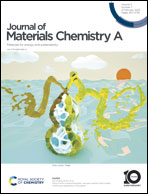A review on tailoring the corrosion and oxidation properties of MoS2-based coatings
Abstract
Two-dimensional (2D) layered molybdenum disulfide (MoS2) has intriguing physical, mechanical, optical, and semi-conducting properties and has the potential to be used in a variety of applications, such as sensors, semi-conductor devices, energy storage/conversion devices, etc. Due to its superior lubricating capabilities resulting from the easy shearing of its lamellar structure, MoS2 has traditionally been used as a solid lubricant and wear-resistant coating over metallic substrates. Unfortunately, its high susceptibility to corrosion and oxidation restricts its use in moist and humid environments. Oxidation profoundly affects the frictional, mechanical, semi-conducting, and optical properties of MoS2. This article extensively reviews the current state of knowledge on the corrosion and surface oxidation mechanism in MoS2 and MoS2-based coatings. Besides, the effect of oxidation on the frictional properties of MoS2 is also discussed. Several experiments undertaken to tailor the corrosion and oxidation properties of MoS2-based coatings to prompt their usage under humid and moist conditions are also comprehensively reviewed here. Recent employment of MoS2 as a corrosion protective filler in organic coatings is also briefly discussed.

- This article is part of the themed collection: Journal of Materials Chemistry A Recent Review Articles


 Please wait while we load your content...
Please wait while we load your content...